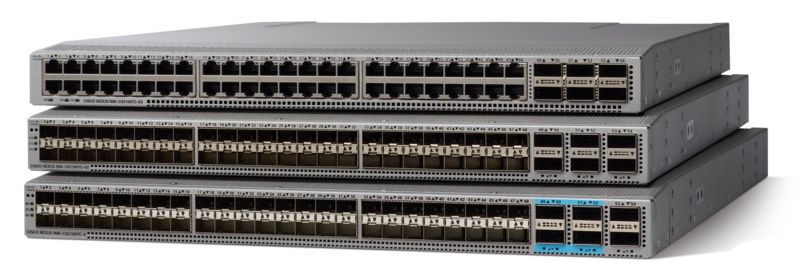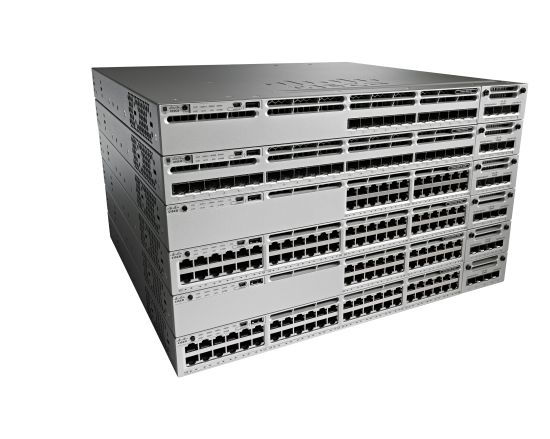A 100Gbps switch is an Ethernet switch that operates at speeds of up to 100 gigabits per second, offering significantly faster data transfer rates compared to traditional 10 Gigabit Ethernet or 40 Gigabit Ethernet switches. These switches provide ultra-high-speed connectivity for servers, storage devices, and network infrastructure, enabling organizations to meet the growing demands of data-intensive applications and services.
Key Functions and Characteristics:
Ultra-High-Speed Connectivity: The primary function of a 100Gbps switch is to provide ultra-high-speed connectivity between network devices at speeds of up to 100 gigabits per second. This allows for extremely fast data transfer, low latency, and superior network performance, particularly for applications requiring massive data throughput, such as high-performance computing, big data analytics, and real-time multimedia streaming.
Port Density: 100Gbps switches come with multiple ports to accommodate a variety of network devices, including servers, switches, routers, and storage arrays. Common configurations include 8, 16, 32, or 48 ports, providing scalability and flexibility to meet the diverse connectivity needs of modern data center and enterprise networks.
Backward Compatibility: Many 100Gbps switches offer backward compatibility with lower-speed Ethernet standards, such as 10 Gigabit Ethernet, 40 Gigabit Ethernet, and 25 Gigabit Ethernet. This allows organizations to seamlessly integrate 100Gbps switches into existing network infrastructures without requiring a complete overhaul of network equipment.
Modular Design: Some 100Gbps switches feature modular designs that allow for flexible configuration and scalability. They may support interchangeable interface modules, such as QSFP28 (Quad Small Form-factor Pluggable 28), enabling organizations to adapt to changing network requirements and future-proof their infrastructure.
Advanced Features: 100Gbps switches often include advanced features such as Quality of Service (QoS), Virtual LAN (VLAN) support, Link Aggregation (LAG), and network management capabilities. These features help optimize network performance, prioritize critical traffic, and simplify network administration and troubleshooting in complex data center and cloud environments.
Energy Efficiency: Many modern 100Gbps switches are designed with energy-efficient features to minimize power consumption and reduce operational costs. This includes support for Energy-Efficient Ethernet (EEE) standards, intelligent power management features, and low-power components to maximize energy efficiency without compromising performance.
Importance in Network Architecture:
100Gbps switches play a crucial role in modern network architecture, particularly in environments where ultra-high-speed, low-latency connectivity is essential for supporting mission-critical applications and services. They serve as the backbone of data center networks, cloud infrastructures, and high-performance computing clusters, enabling organizations to achieve faster data transfer rates, improved scalability, and superior network performance to meet the demands of today’s digital economy.
Conclusion:
In conclusion, a 100Gbps switch is a fundamental networking device that provides ultra-high-speed connectivity for organizations requiring fast and reliable data transmission. With its ultra-high-speed capabilities, port density, backward compatibility, modular design, advanced features, and energy efficiency, the 100Gbps switch forms the cornerstone of modern network infrastructure, empowering organizations to build robust and efficient networks capable of supporting the most demanding applications and services.

1
Cisco Nexus 9000 Series

Cisco’s Nexus 9000 series switches offer high performance, scalability, and advanced features tailored for datacenter environments, including support for Cisco’s Application Centric Infrastructure (ACI).
2
Arista Networks 7000 Series

Arista’s 7000 series switches are known for their low-latency, high-density, and scalability, making them popular choices for cloud-scale datacenters and high-performance computing environments.
3
Juniper Networks QFX Series

Juniper’s QFX series switches provide high-density 10/25/40/100 Gigabit Ethernet interfaces, advanced features for datacenter fabrics, and support for Junos operating system.
Datasheet:
QFX5110 10/40GbE switches:
qfx5110-ethernet-switch-datasheet.pdf (juniper.net)
QFX5120 line offers 1/10/25/40/100GbE switches
Datasheets:
QFX5200 line offers line-rate, low-latency 10/25/40/50/100GbE switches
qfx5200-switch-datasheet.pdf (juniper.net)
QFX5210 line offers line-rate, low-latency 10/25/40/100GbE switches
qfx5210-switch-datasheet.pdf (juniper.net)
QFX5220 line offers up to 400GbE interfaces switches
4
Extreme Networks SLX Series

Extreme Networks’ SLX series switches offer cloud-scale architecture, programmability, and automation capabilities, making them suitable for modern datacenter deployments.
5
Dell EMC PowerSwitch Z-Series

Dell EMC’s PowerSwitch Z-Series switches offer high-density 25/100 Gigabit Ethernet interfaces, programmability, and support for software-defined networking (SDN) solutions.
Datasheet:
High-performance, high-density open networking 40/100GbE multi rate aggregation switch
dell-emc-networking-z9264-on-spec-sheet.pdf (delltechnologies.com)
Datasheet
High-performance, high-density open networking 100/400GbE switch
dell-emc-networking-z9332f-spec-sheet.pdf (delltechnologies.com)
Datasheet
High-performance, high-density open networking 100/400GbE switch
dell-emc-powerswitch-z9432f-spec-sheet.pdf (delltechnologies.com)
6
Cisco Nexus 3000 Series

Cisco’s Nexus 9000 series switches offer high performance, scalability, and advanced features tailored for datacenter environments, including support for Cisco’s Application Centric Infrastructure (ACI).
Datasheet:
Nexus 3100-V
Cisco Nexus 3100-V Platform Switches Data Sheet – Cisco
Nexus 3132C-Z
Cisco Nexus 3132C-Z Switches Data Sheet – Cisco
Datasheet:
Nexus 3408-S
Cisco Nexus 3408-S Switch Data Sheet – Cisco
Nexus 3432D
Cisco Nexus 3432D-S Switch Data Sheet – Cisco
Nexus 34108YC & 3464C Programmable Switches
Cisco Nexus 34180YC and 3464C Programmable Switches Data Sheet – Cisco
7
HPE FlexFabric Comware Series

Hewlett Packard Enterprise’s FlexFabric series switches provide high-performance, scalability, and support for advanced datacenter features such as Virtual Extensible LAN (VXLAN) and network virtualization.
8
Mellanox Spectrum Series (nvidia)

Mellanox’s Spectrum series switches feature high-speed Ethernet connectivity, low-latency, and advanced features optimized for modern datacenter architectures, including support for RDMA over Converged Ethernet (RoCE).
Models and Datasheet:
NVIDIA SPECTRUM SN2000 | DATASHEET
SN2010- 18 SFP28 25GbE + 4 QSFP28 100GbE
SN2100 – 16 QSFP28 100GbE
SN2201 – 48 RJ45 + 4 QSFP28 100GbE
SN2410 – 48 SFP28 25GbE + 8 QSFP28 100GbE
SN2700 – 32 QSFP28 100GbE
Models and Datasheet:
NVIDIA Spectrum SN3000 Series Switches | NVIDIA (widen.net)
SN3420 – 48 SFP28 25GbE + 12 QSFP28 100GbE
SN3750-SX – 32 QSFP56 200GbE
SN3700C – 32 QSFP28 100GbE
SN3700 – 32 QSFP56 200GbE
Models and Datasheet:
NVIDIA Spectrum SN4000 Series Switches
SN4410 – 24 QSFP28-DD 100G + 8 QSFP-DD 400GbE
SN4600C – 64 QSFP28 100GbE
SN4600 – 64 QSFP56 200GbE
SN4700 – 32 QSFP-DD 400GbE
9
HPE Aruba Networking CX Series

Simplify the complexities of deploying and managing modern enterprise networks with AI-powered automation and built-in security delivered by network switches that scale from edge to the cloud.
Models and Datasheet:
CX8100
HPE Aruba Networking CX 8100 Switch Series – Datasheet (arubanetworks.com)
CX8325
Aruba CX 8325 Switch Series Data Sheet (arubanetworks.com)
10
Brocade VDX Series

Brocade, now part of Broadcom/Extreme offers the VDX series switches with features such as low-latency, high-density 10/25/40/100 Gigabit Ethernet interfaces, and support for TRILL-based fabric architectures.